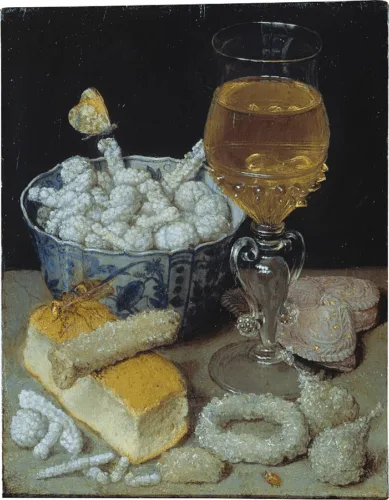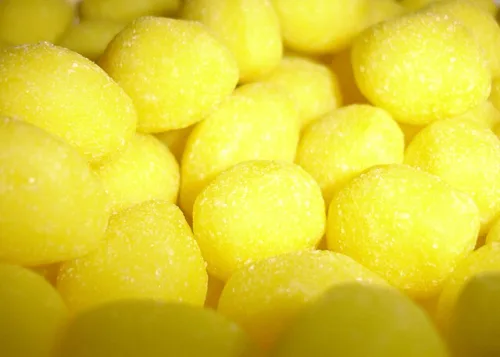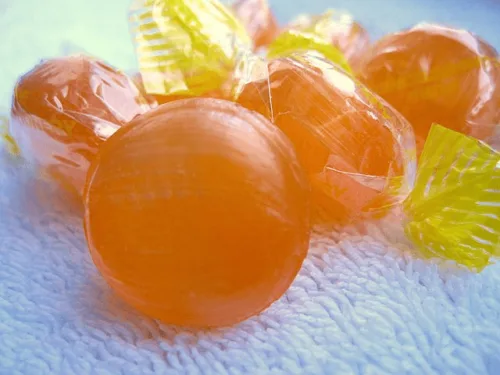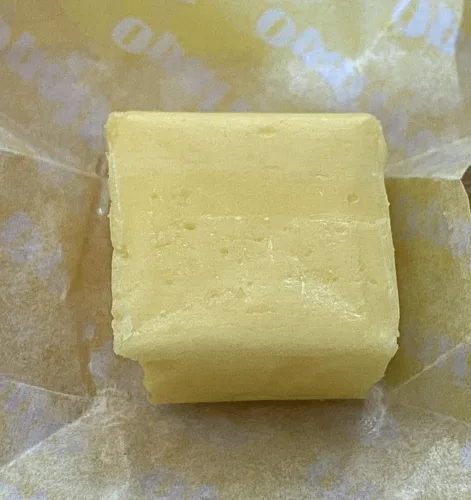Regency Era Sweets for Candy Day
Candy is one of those things we largely take for granted today. Found in nearly every shop and store, it is easy to forget that these sweet treats were once rare and special treats, often expensive and difficult to prepare.
What sorts of candies would the folks of Austen’s day enjoyed? Here are a few of my favorite recipes from cookbooks available in the day.
Comfits
Comfits are seeds or nuts in a candy shell coating. Caraway comfits were popular after dinner sweets.

No. 97. The way to make all sorts of Caraway Confits,
TAKE some fine carraway seeds, sift all the dust from them, and have a large copper preserving pan about two feet wide and with two handles, and two pieces of iron made as a ring on each side, then you must have a pulley fixed to the beam and a cord with a hook to each end so as to fix it at each side of the pan to (make a) pan sling ; then have some fine starch as white as you can get and just soften it, boil some syrup a quarter of an hour and mix it with the starch ; take some gum arabic, put it into some water, then put that into another pan and make it just warm ; have an iron pot with charcoal fire under the large pan, but not too hot, only just enough to keep the pan warm ; have a large tub to put your pot of fire at bottom and your large pan must be on the top ; put the carraway seeds into your pan ; adda large ladle full of gum arabic, rub them with your hands until you find they are ail dry ; then put the ladle full of starch and syrup, and do the same over your pan until you find they are all dry ; put the gum only three or four times to them at first, then to starch and sugar, but boil your syrup more as you find they come to coat with it and not so much starch ; when you have dried them seven or eight times put them into your sieve ; put them into the stove, do them the next day, and so for six or seven days successively (Nutt)
Drops
Cook books contained many varieties drop style candy

LEMON DROPS OR RATHER PASTILS.
TAKE half a pound of pounded loaf sugar, sifted as fine as possible, put it in a plate, take three or four lemons which you squeeze over your sugar ; mix it well with a spoon, till you see it makes what is called a royal paste, a little thickish, that you may take it upon a knife ; then take half a- sheet of paper and cover it with little, round, and flat drops, which we call pastis of the size of a farthing; place it in the Hove with a flow fire till it is quite dry, and take, it off from the paper ; you may add to it, if you chuse, some of the skin of the lemon rasped or grated, but not chipped ; for as it is a melting pastil they would find some of the bits in their mouth, which is not quite so well. (Borella)
Rock sugar
690. Rock Candy.
Have some shallow square tins, two inches deep, made to hold a quart of clarified sugar; boil the sugar to a boil… fill the pans with it, and put over it, while hot, picked corn flowers, stocks, or jonquils, to cover; put in a very hot stove, of one hundred and twenty degrees heat; let it stand three days; when hard at top, break a small hole in the candy, set it to drain one day; break the candy out of the tins; when wanted, place one piece on the other of different colours, sticking it together with a little thick gum-arabic water, and dry them. (Cooke)
Barley Sugar

677. Lemon Barley Sugar
.Boil one pint of syrup…to a caromel when done add twenty drops of essence of lemon, and pour it out in lengths on a marble slab, oiled; when nearly cold, twist it.
Note.—Barley-sugar drops are made by dropping it on the slab, and wrapped up in papers with a little sifted sugar. If made in large quantities, it is poured on a slab made to hold the quantity, and when cold cutinng lengths with scissors, and twisted.
Ginger barley-sugar is made the same as this, omitting the lemon, and adding a spoonful of the concentrated essence of ginger, when nearly boiled. (Cooke)
Bomboons
These will come out as a soft, chewy candy like the American Starburst candy.
Lemon or Orange Bomboons.
Take a piece of loaf sugar, rasp the oranges or lemons with it, brush off what sticks to the sugar upon a paper; then pound in a mortar the same piece of sugar, and put it in a pan with that which is upon the paper, and which tastes of the lemon or orange; set it upon a gentle fire to melt it slowly; after which pour it upon a tin plate, which must be rubbed before with a little butter, or it will stick to the plate; then spread it with the rolling-pin …(observe the rolling-pin must likewise be rubbed with butter, for fear it should stick) when this is done, and it is perfectly cold, cut it in what shape you please and send it up. (Glass)
References
Borella. The Court and Country Confectioner: Or, the House-keepers Guide ; to a More Speedy, Plain, and Familiar Method of Understanding the Whole Art of Confectionary … A New Edition. To Which Is Added, a Dissertation on the Different Species of Fruits, and the Art of Distilling … By Mr. Borella ..London: Printed for G. Riley, 1772.
Cooke, John Conrade. Cookery and confectionery. London : W. Simpkin, and R. Marshall, 1824.
Glass, Hannah. The Complete Confectioner. London: West and Hughes, 1800.
Nutt, Frederick. The Complete Confectioner ; Or, the Whole Art of Confectionary: … By a Person, Late an Apprentice to the Well-known Messrs. Negri and Witten ..London: Printed for the Author, 1807.



Trying to follow those recipes would give me a headache. I’m sure any cook of the day would know what all that meant.
I am so glad I can walk into any store and have just about any sweet I want. And, certainly more than I need or is good for me.
We have come a long way.
Thank you! It is always fascinating to read the details involved in creating something that we take so much for granted, as well as to get a ‘flavour’ for those candies we read about in Austen’s time period but have not survived to present day.
I love lemon drops and hard candy! Now I know its origination.
Delightful information! I had always wondered what “comfits” were—now I know! I love your Pemberley series💕. Just the sort of fantasy all ages can enjoy!